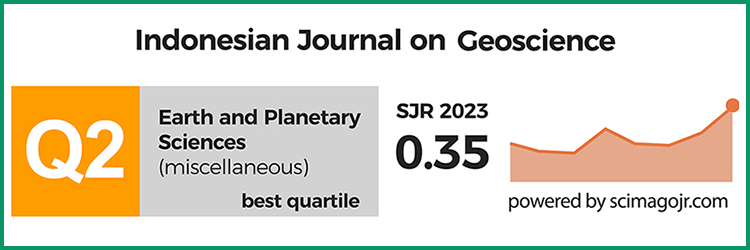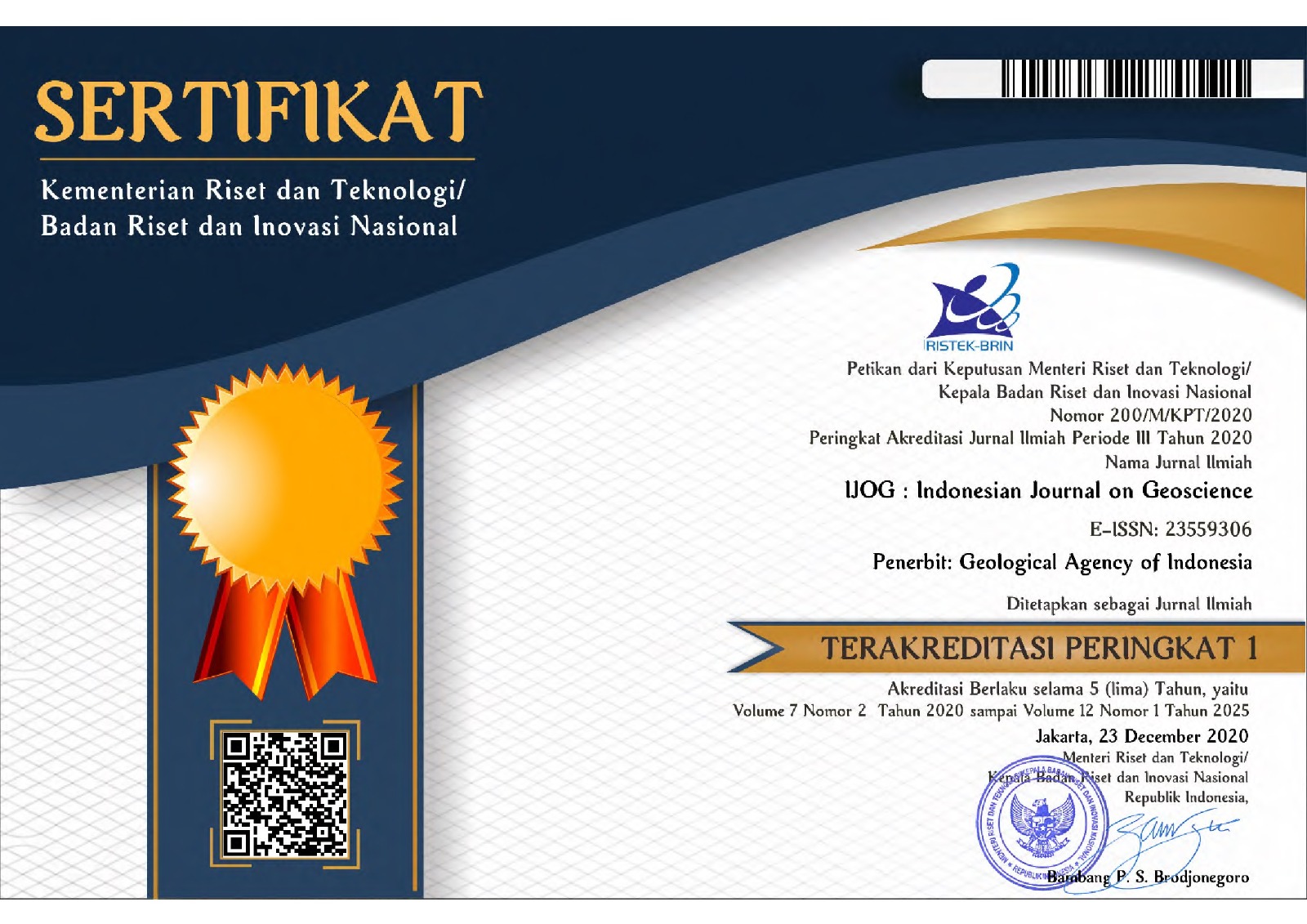The Investigation of Subsurface Beds using Microtremor and Geo-electric Methods in A Liquefied Area in Bengkulu City After The Bengkulu-Mentawai Earthquake
DOI:
https://doi.org/10.17014/ijog.11.3.377-390Abstract
Bengkulu Province, Indonesia, is one of regions prone to earthquake hazards. Daily seismic activity, albeit
minor, and imperceptible to humans is common place. Data from the Meteorology, Climatology, and Geophysics
Agency reveals an average of eight earthquakes per week. Earthquakes often trigger subsequent disasters such as
tsunamis, landslides, and liquefaction. However, liquefaction-related phenomena are often overlooked in researchs,
particularly concerning subsurface layers. A notable event occurred on September 12th, 2007, when a powerful 8.6
magnitude earthquake struck Indonesia, causing significant damage, particularly in Bengkulu City. This was followed
by a liquefaction disaster in Tanah Patah Village, Bengkulu City. Consequently, the aim of this study is to assess the
subsurface conditions in the liquefaction-affected area using geophysical techniques, including microtremor and geoelectric surveys. The data was analyzed to evaluate soil conditions in the affected zone. The resistivity values indicate a predominance of water and sand mixtures at depths of 0 - 20 m (ranging from 1.46 to 15.5 Ω·m in Geo_TP-1 and from 4.64 to 15.1 Ω·m in Geo_TP-2). These conditions can facilitate processes like condensation and water flow, leading to sand compaction and increase susceptibility to liquefaction. The findings reveal that loose sand dominates the subsurface layers, rendering them highly vulnerable to liquefaction during intense seismic events. Furthermore, the environmental characteristics of the studied area exacerbate its susceptibility to liquefaction. This study provides a comprehensive analysis of soil conditions in the liquefied zone of Bengkulu City.
Downloads
Published
Versions
- 28-11-2024 (2)
- 28-11-2024 (1)



















